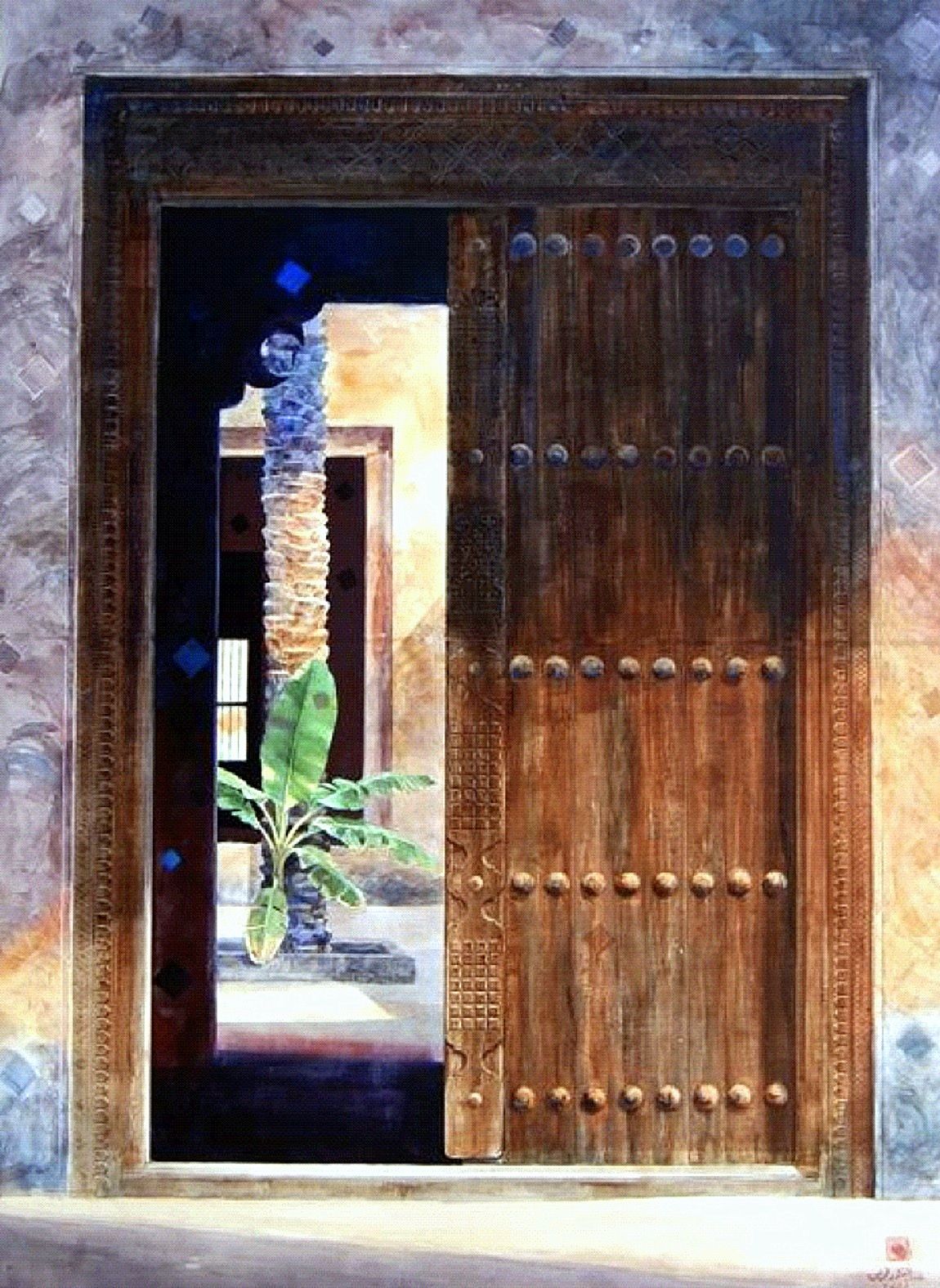Beyond the Door
The Najdi door, adorned with clear, colorful engraving, Courtesy of Diriyah Gate Development Authority.
In Saudi culture, a door is never merely a passage into a home. It symbolizes hospitality, protection, and the boundary between private and public life. The Najdi door holds deeper significance, acting as a social symbol, a window into the lives within, and a story of the house's inhabitants.
The exhibition "Beyond the Door" delves into these roles and more, narrating the story of the Najdi door, the secrets of its craftsmanship, and its enduring legacy.
"Beyond the Door" transcends the boundaries of a typical art exhibition, serving as a vibrant celebration of Najdi heritage, embodied in the timeless allure of its doors.
Not only does it pay homage to the traditional artisans and artists contributing to the exhibition, but it also ignites a spark of inspiration within a new generation of young men and women, fostering a deeper appreciation for their local culture.
Furthermore, it is the culmination of two years of meticulous research led by art curator Dr. Eiman Elgibreen, who has meticulously woven her observations, interviews, and profound reflections on the history and aesthetics of the Najdi door.
In the center of Diriyah, this exhibition offers a unique opportunity to delve into one of the most deeply rooted artistic expressions of Najdi heritage, exploring its historical, cultural, and artistic significance.
Each section within the exhibition is thoughtfully curated to illustrate and illuminate various facets of the Najdi door, from its geometric compositions and constituent elements, including locks and hinges, to the symbolic meaning behind the colors and their connection to the nature-inspired engravings.


Artist Ali Al-Ruzaiza's pergola "Areshah". Courtesy of Diriyah Gate Development Authority.
An invisible thread weaves between ancient doors and our contemporary lives. Though deeply rooted in the past, their influence resurfaces in various artistic projects within the exhibition. The exhibition spaces themselves are divided as if mirroring the components of a door, guiding visitors on a journey from the practical uses of the Najdi door to its aesthetic appeal, then to the mechanics of its movement, and finally to the tools used in its creation. Each space unveils artistic pieces that tell stories of historical significance or contemporary inspiration.
Perhaps the most significant of these spaces is the pergola of artist Ali Al-Ruzaiza. Raised by his grandmother, may she rest in peace, he was deeply influenced by the intricate details of their traditional Najdi home. This formative experience sparked a lifelong fascination with the ornate doors and plaster carvings characteristic of Najdi architecture. He began crafting his own furniture, seamlessly integrating these traditional elements into his contemporary designs. The Najdi door, with its intricate carvings, became a recurring motif in his work. Through this artistic lineage, we witness the harmonious convergence of past and present, where heritage patterns intertwine with time-honored techniques and architectural principles.
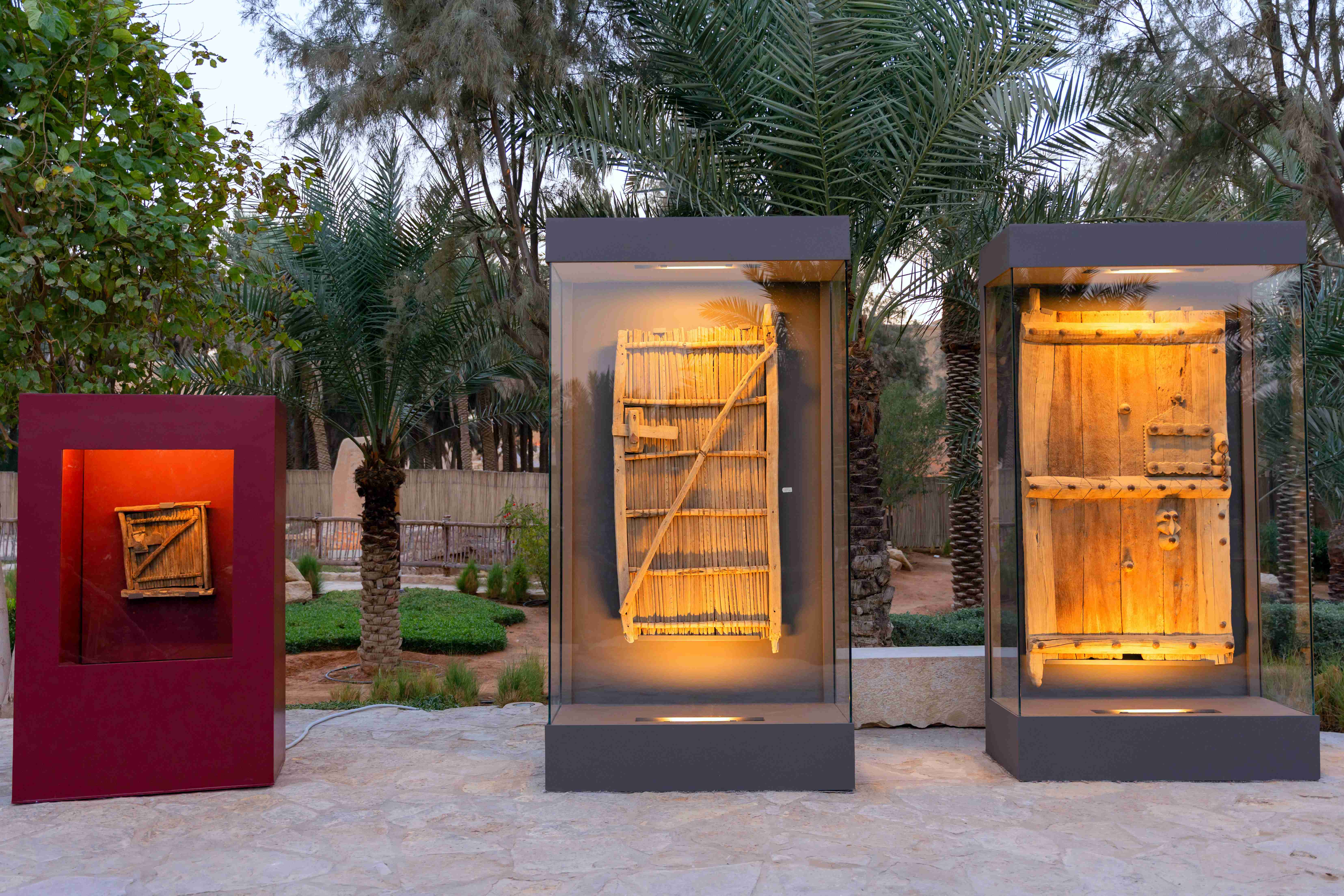
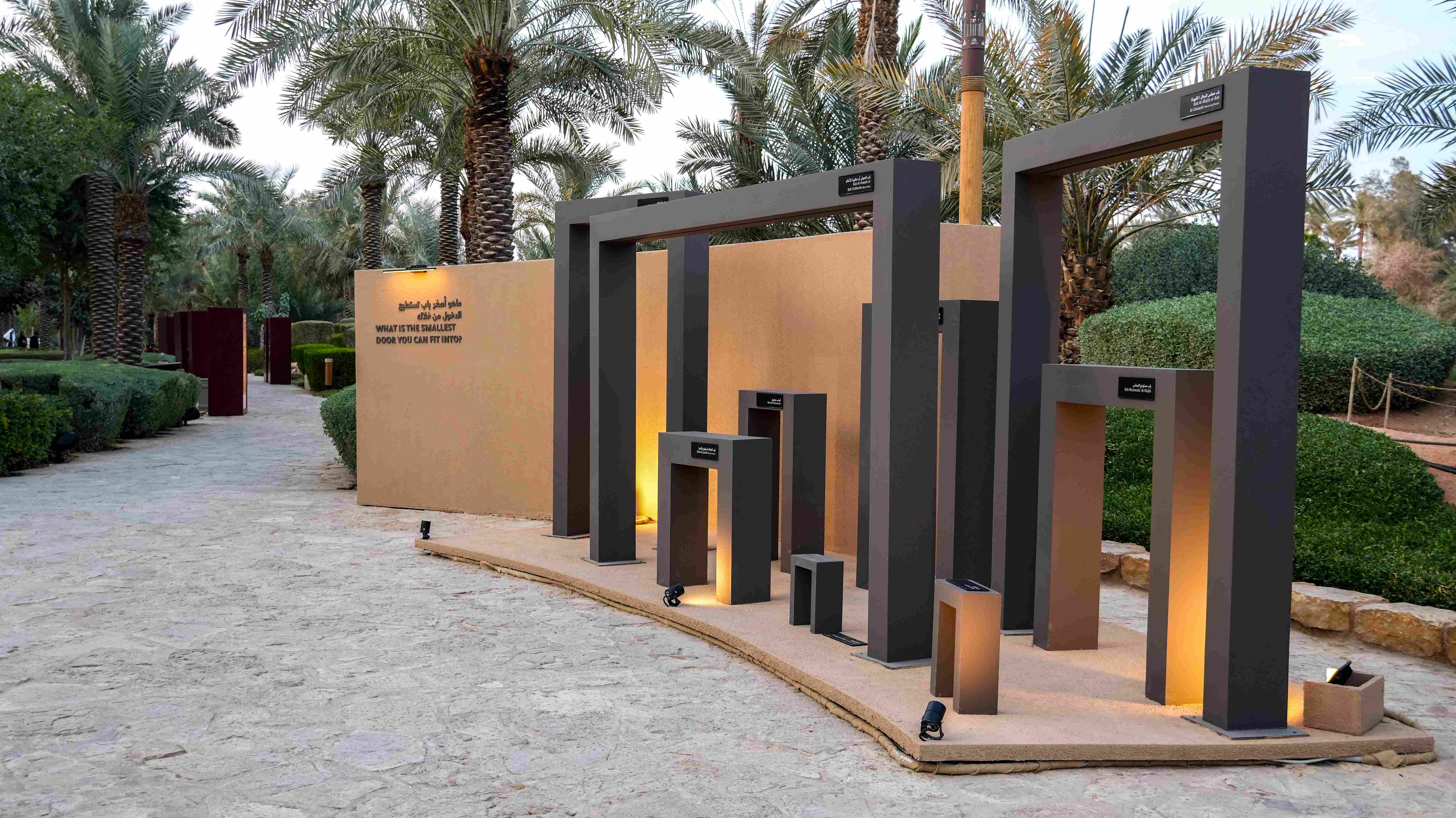
The interactive area of the exhibition. Courtesy of Diriyah Gate Development Authority.
Over the years, Najdi doors have maintained their simple elegance and allure. Crafted from local materials, their decorative elements draw inspiration from the natural environment, local architectural traditions, and the surrounding cultural and environmental influences. The diverse functions of these doors have led to a rich variety, the most important of which include:
The size of exterior doors varies according to the size of the house. Medium and large houses typically feature two primary entrances: one, prominently located in the center of the front facade, is a grand, ornately decorated, and colorful door intended for welcoming guests; and the other, more discreetly placed away from the street, is a smaller and less adorned door reserved for the family, offering privacy and tranquillity.
The main entrance, while a passage for entry and exit, is a symbolic welcome to guests. Its ornate designs showcase the homeowners' pride in hospitality.
This door embodies the values of generosity and hospitality deeply ingrained in Najdi culture. The Majlis, or "Gahwa" (coffee house), is the heart of a Najdi home, the largest space designed for gatherings and hospitality.
The alcove, a symbol of hospitality, is built at the head of the Majlis. It comprises the "Wajjar" (a traditional architectural element found in Najdi homes, specifically designed for preparing coffee over an open fire) and the "Kemar". The Wajjar is a niche or alcove with a hearth where wood or charcoal is burned to heat the coffee pot (Dallah) and roast the coffee beans. This alcove holds cultural importance as it is where the ritual of coffee preparation takes place – a central aspect of Najdi hospitality. The Kemar, a series of shelves crafted from clay and gypsum, stores essential hospitality tools, including coffee pots, roasters (Mehmas), tongs (Melkat), coffee cups (Fenjan), and various implements used for serving coffee and tea to guests.
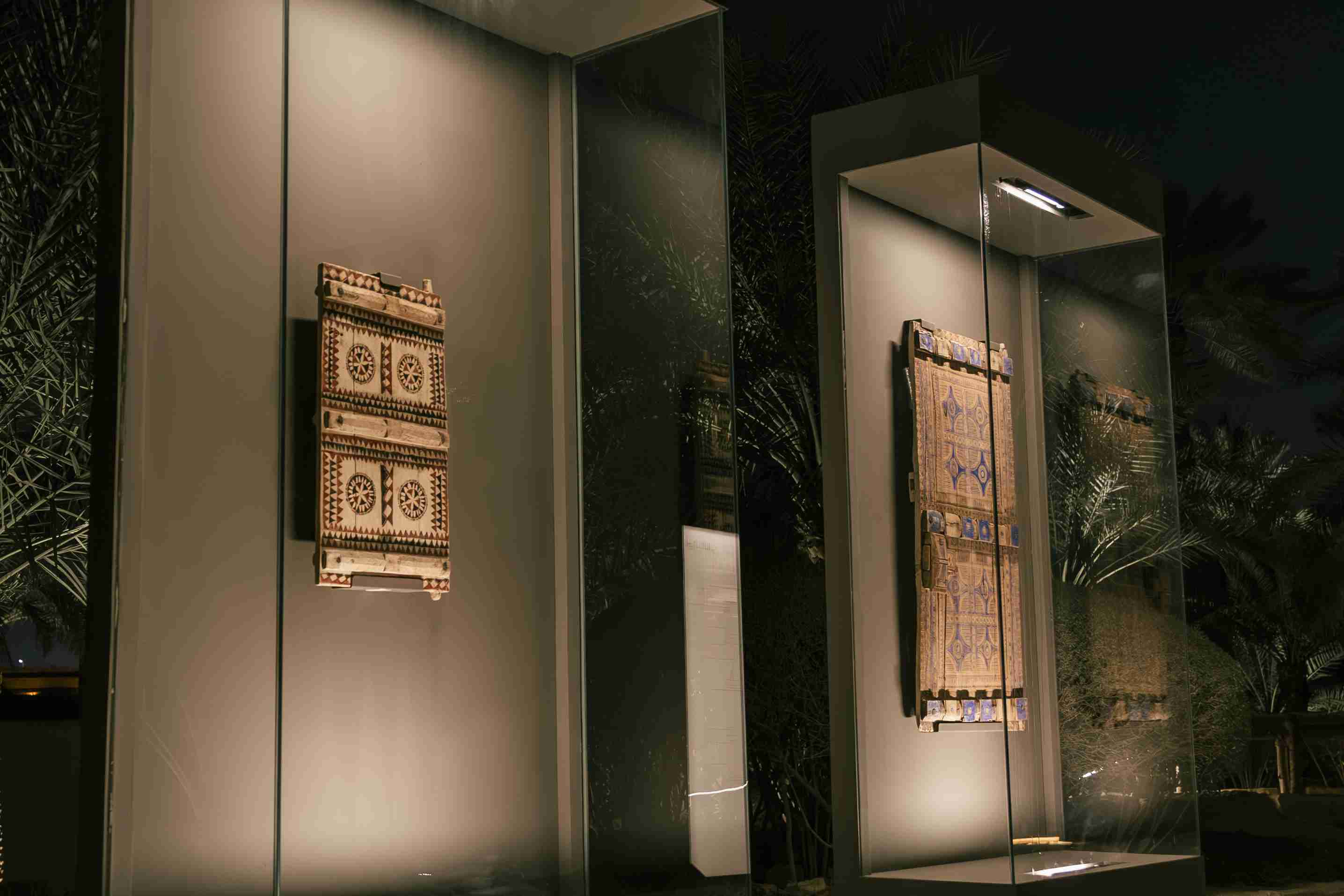
Najdi doors for various purposes. Courtesy of Diriyah Gate Development Authority.
Najdi doors are crafted from locally sourced raw materials, primarily tamarisk or palm wood. The choice of wood is dictated by the door's intended use and function. Tamarisk, renowned for its strength and durability, is the preferred material for doors that need to withstand heavy use and harsh weather conditions. Meanwhile, palm wood, valued for its lightness and flexibility, is ideal for applications where ease of movement is paramount. For instance, the impressive gates of palaces were often constructed from palm trunk planks to reduce their weight and facilitate operation.
Tamarisk wood is particularly well-suited for interior doors due to its exceptional resilience. Its robust nature allows for intricate carving, ornamentation, and painting, resulting in elaborate and visually stunning designs. In some cases, palm wood doors are strategically reinforced with tamarisk elements. This technique enhances their durability without adding unnecessary weight, ensuring they remain functional and easy to operate.
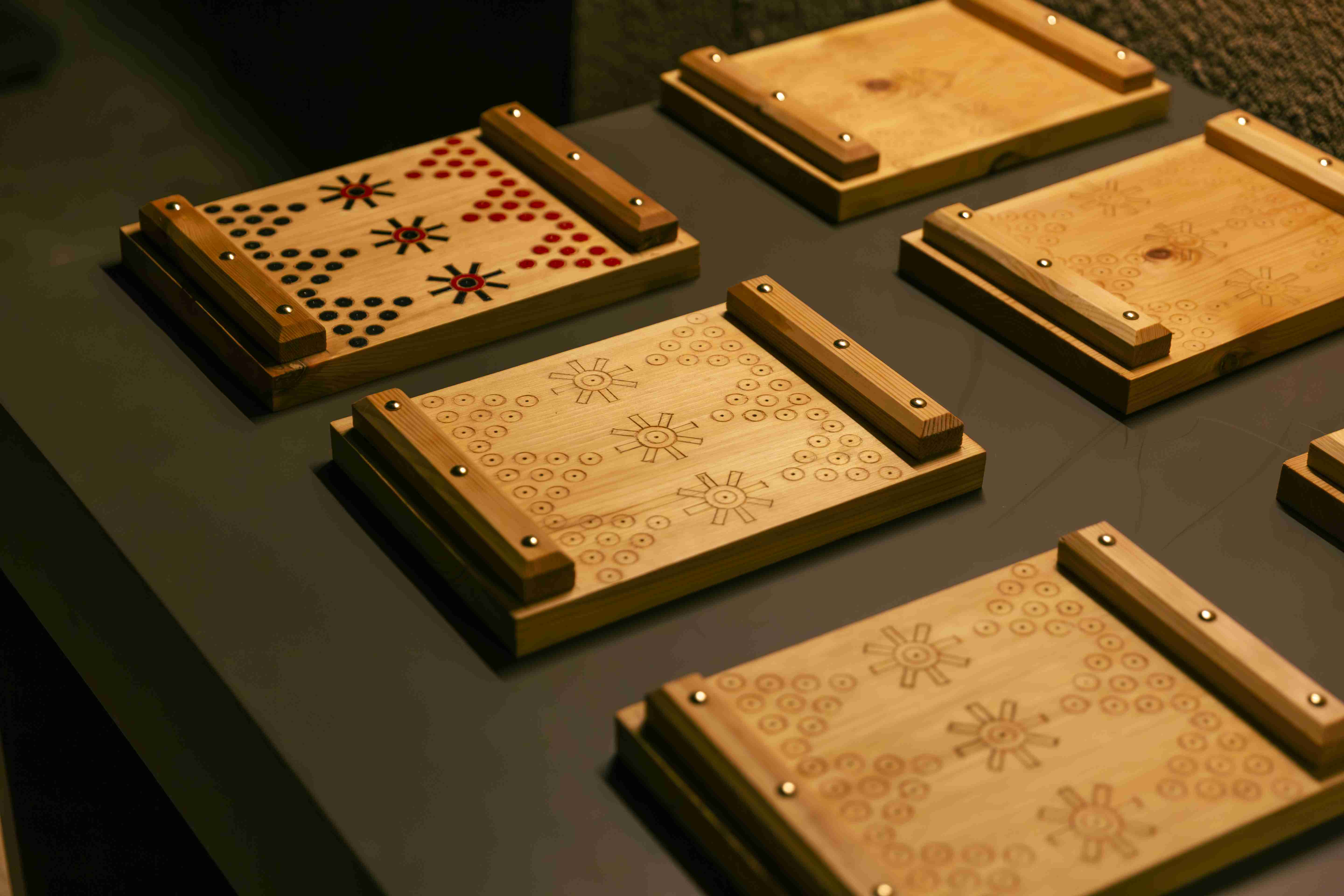
Carvings and ornaments in Najdi doors. Courtesy of Diriyah Gate Development Authority.
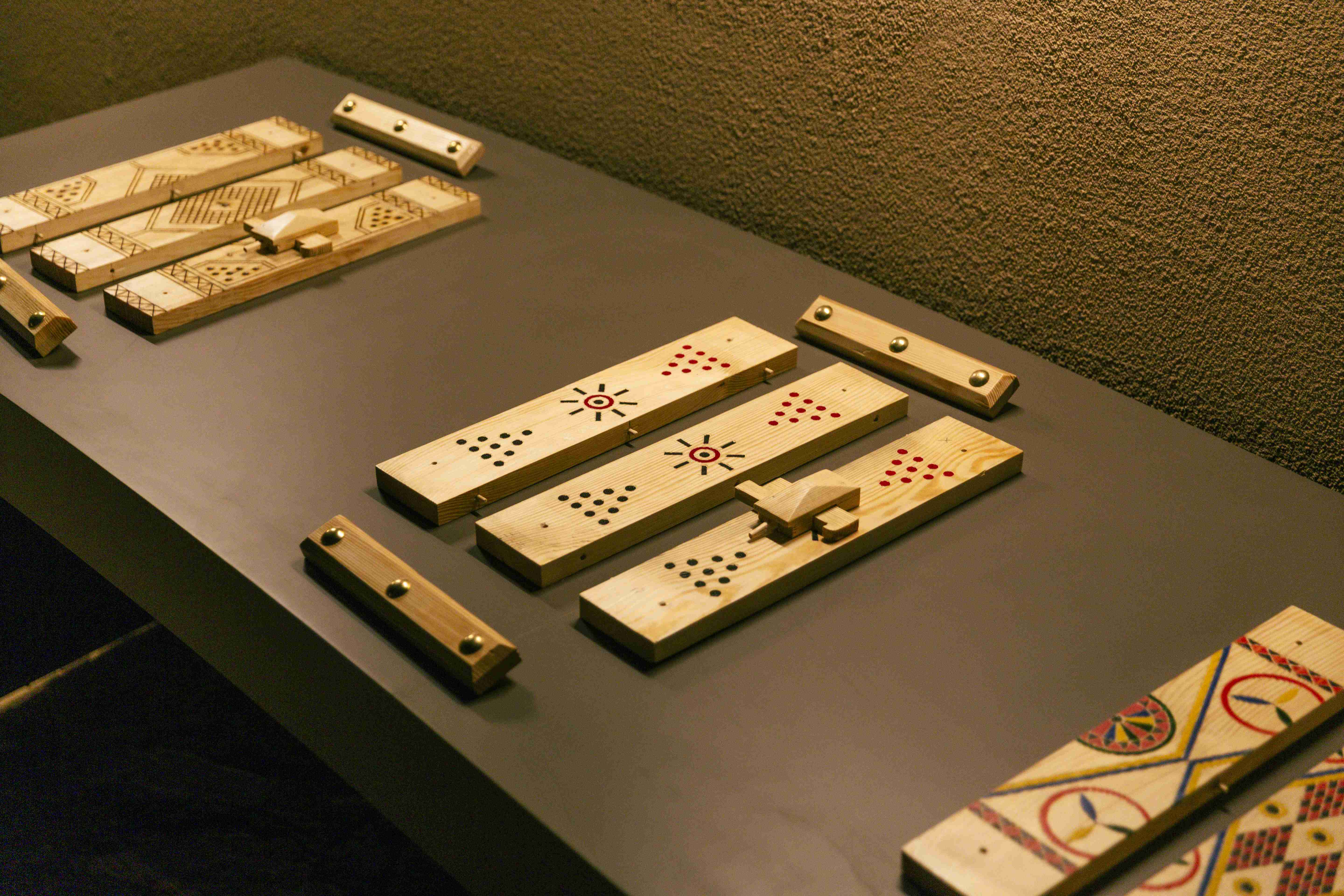
Carvings and ornaments in Najdi doors. Courtesy of Diriyah Gate Development Authority.
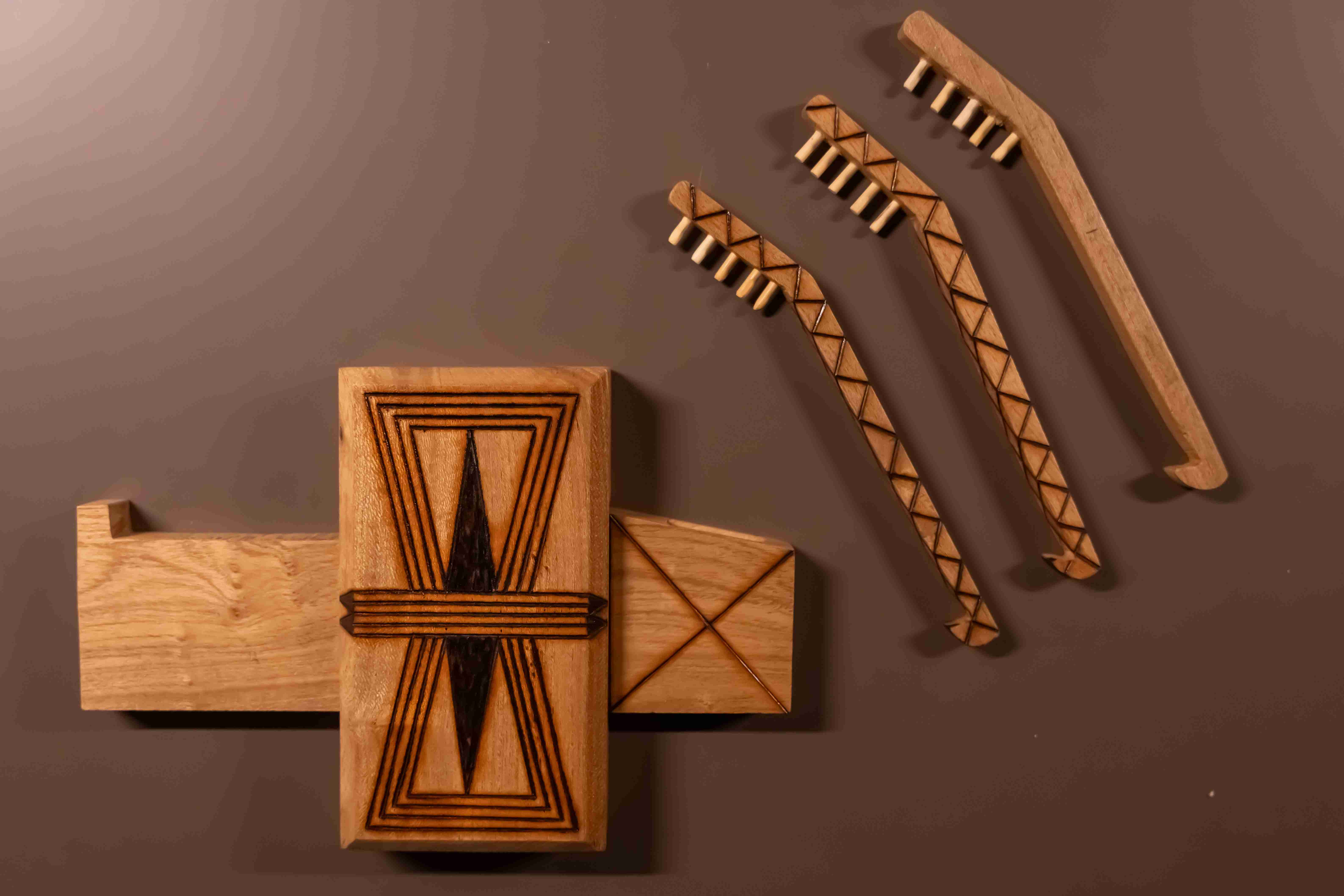
Interactive activity in the exhibition for assembling doors. Courtesy of Diriyah Gate Development Authority.
Historically, Najdi doors were decorated using engraving and wood-burning techniques, with the appropriate technique chosen based on the door's location and intended use. Exterior doors were typically decorated using wood-burning to make the patterns clearly visible and to withstand the harsh climatic conditions of the region. This technique is called "Altakwat" in the Najdi dialect, where iron tools of various sizes and thicknesses are heated according to the desired ornament and then used to brand the wood directly. Exterior doors are also sometimes decorated with metal elements, such as domed and flat nails and chains, depending on the financial capabilities of the homeowner and the availability of raw materials in local markets. Interior doors, on the other hand, are ornamented with shallow or deep hand carving using special tools without the need for wood-burning.
1- The dot, arranged individually or in clusters to form what is known as a "grape cluster". This design is thought to be inspired by the grape clusters that once flourished in Wadi Hanifa.
2- The circle, often appearing in nested groups or as a shape of the sun.
3- The triangle, which may appear alone or in groups.

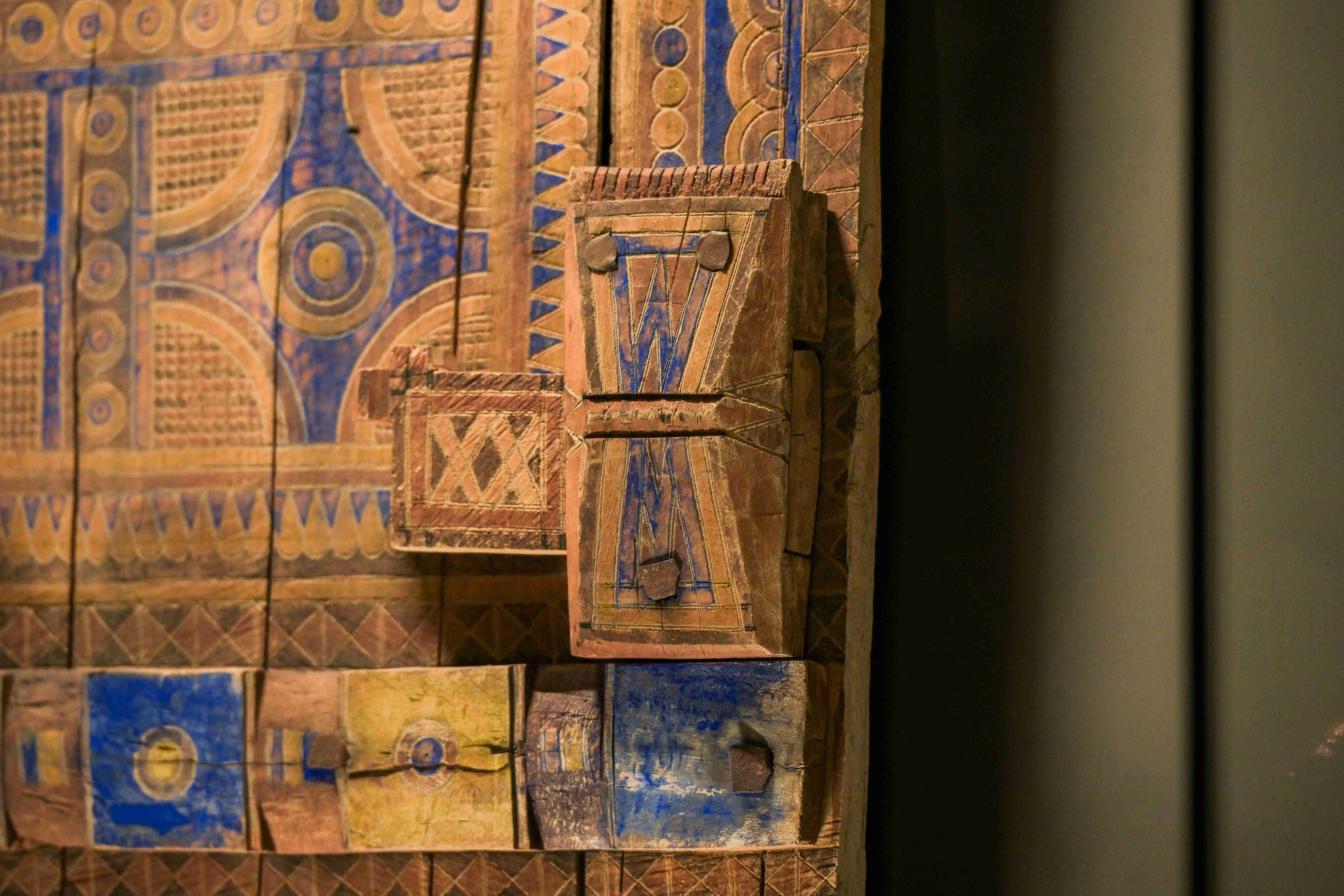
Carvings and ornaments in Najdi doors, Courtesy of Diriyah Gate Development Authority.
In their early days, Najdi doors were adorned with a simple yet elegant palette of black, red, and occasionally yellow. However, as trade routes flourished and the region's prosperity grew, so too did the artistry of these portals. The doors blossomed with vibrant colors and intricate designs, showcasing the rich cultural and economic exchange with distant lands like India, Iraq, and the Levant.
Today, these captivating doors stand as a testament to a vibrant history, each one whispering tales of its owner's status and taste. Like a well-worn book, each Najdi door reveals a unique story – a reflection of the home and its inhabitants, a testament to the artisan's skill, and a window into a world of rich traditions and cultural heritage.
Today, this beloved art form is experiencing a renaissance, celebrated and cherished by a diverse community of artists, enthusiasts, and connoisseurs. The recent exhibition provided a unique platform for these passionate individuals, spanning generations and expertise, to come together and share their love for Najdi architecture and its associated arts. Through lively discussions and engaging dialogues, the exhibition ignited a spark, paving the way for a vibrant future where this captivating art form will continue to flourish and evolve for generations to come.

From the Exhibition "Beyond the Door". Courtesy of Diriyah Gate Development Authority.

From the Exhibition "Beyond the Door". Courtesy of Diriyah Gate Development Authority.
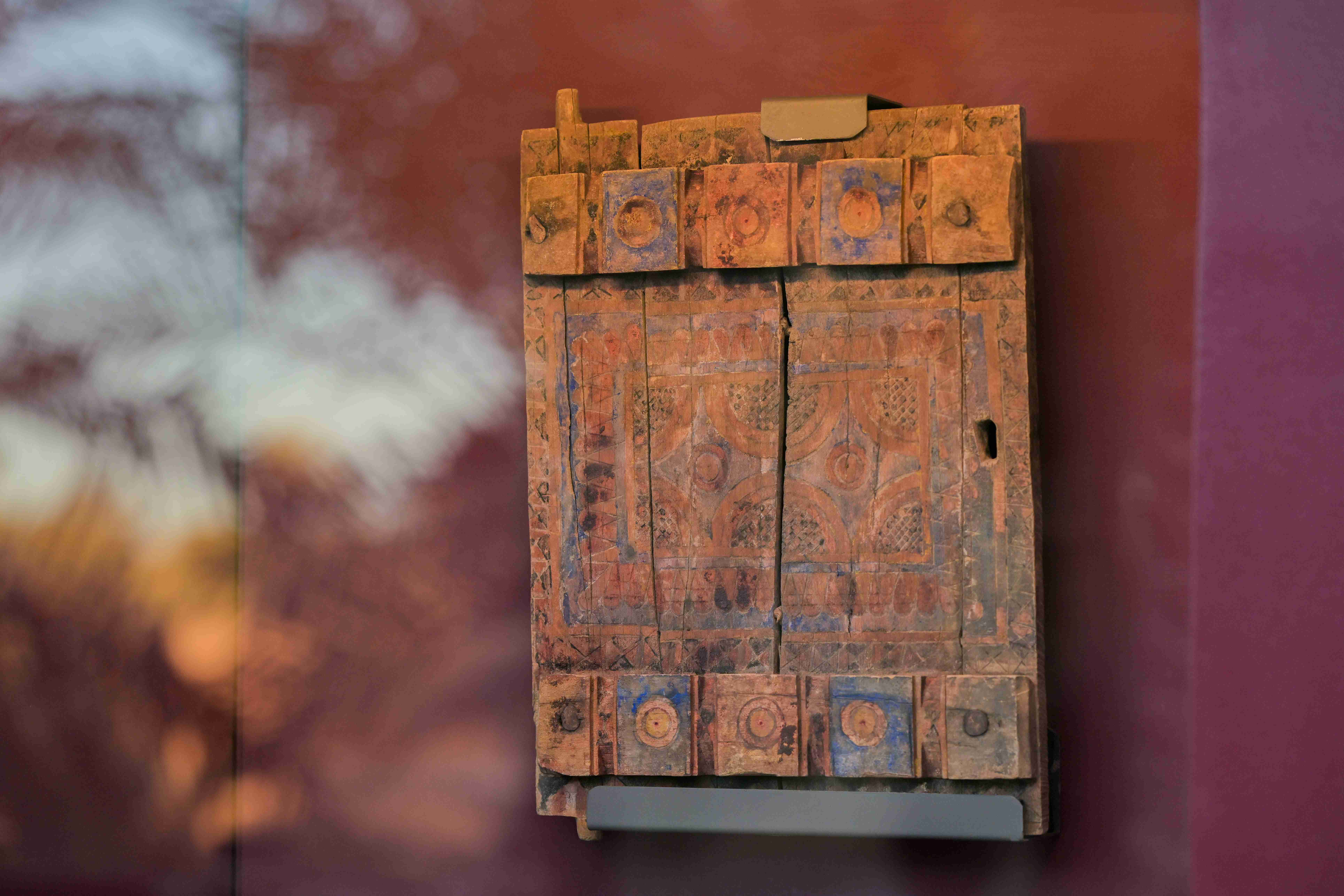
From the Exhibition "Beyond the Door". Courtesy of Diriyah Gate Development Authority.
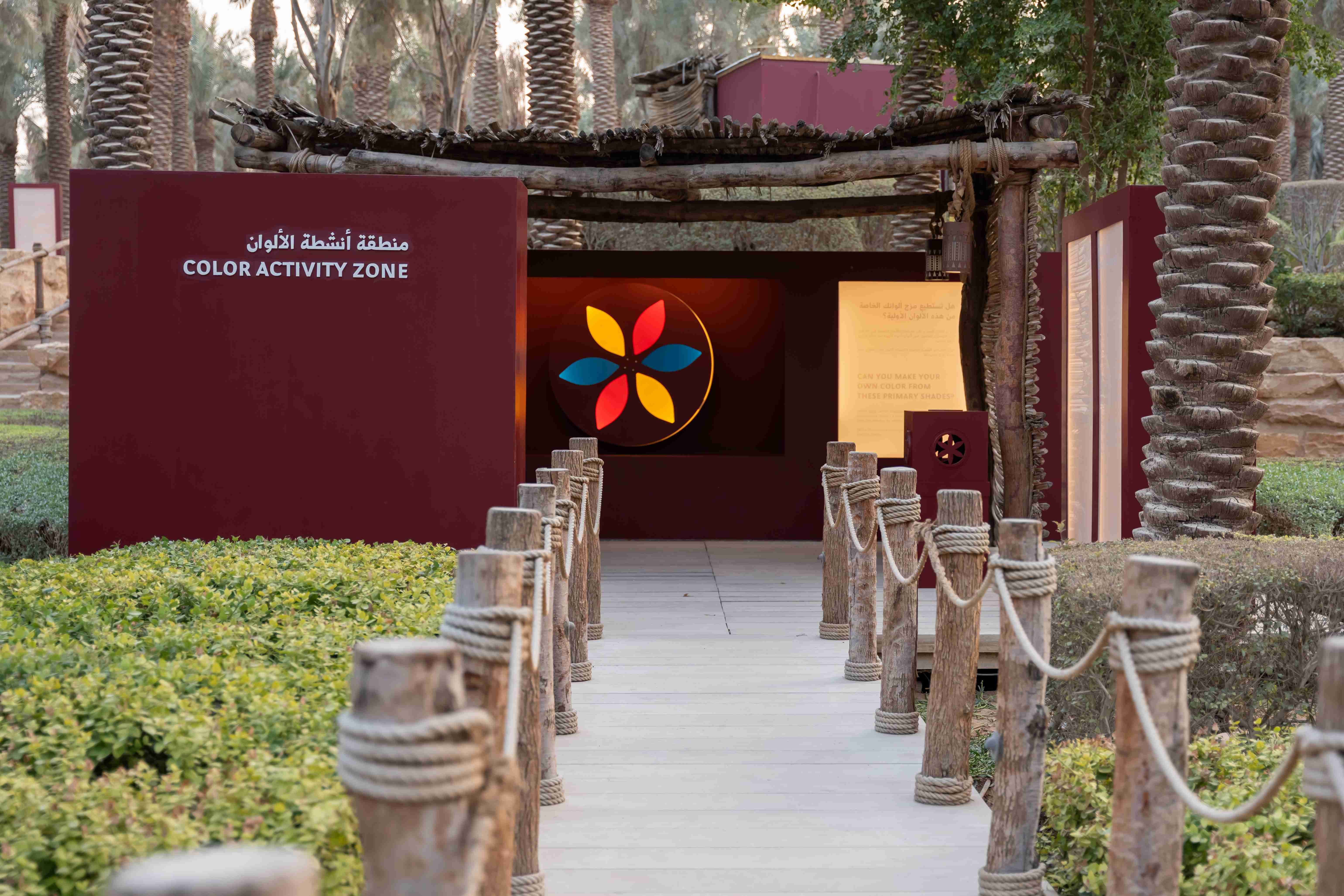
From the Exhibition "Beyond the Door". Courtesy of Diriyah Gate Development Authority.
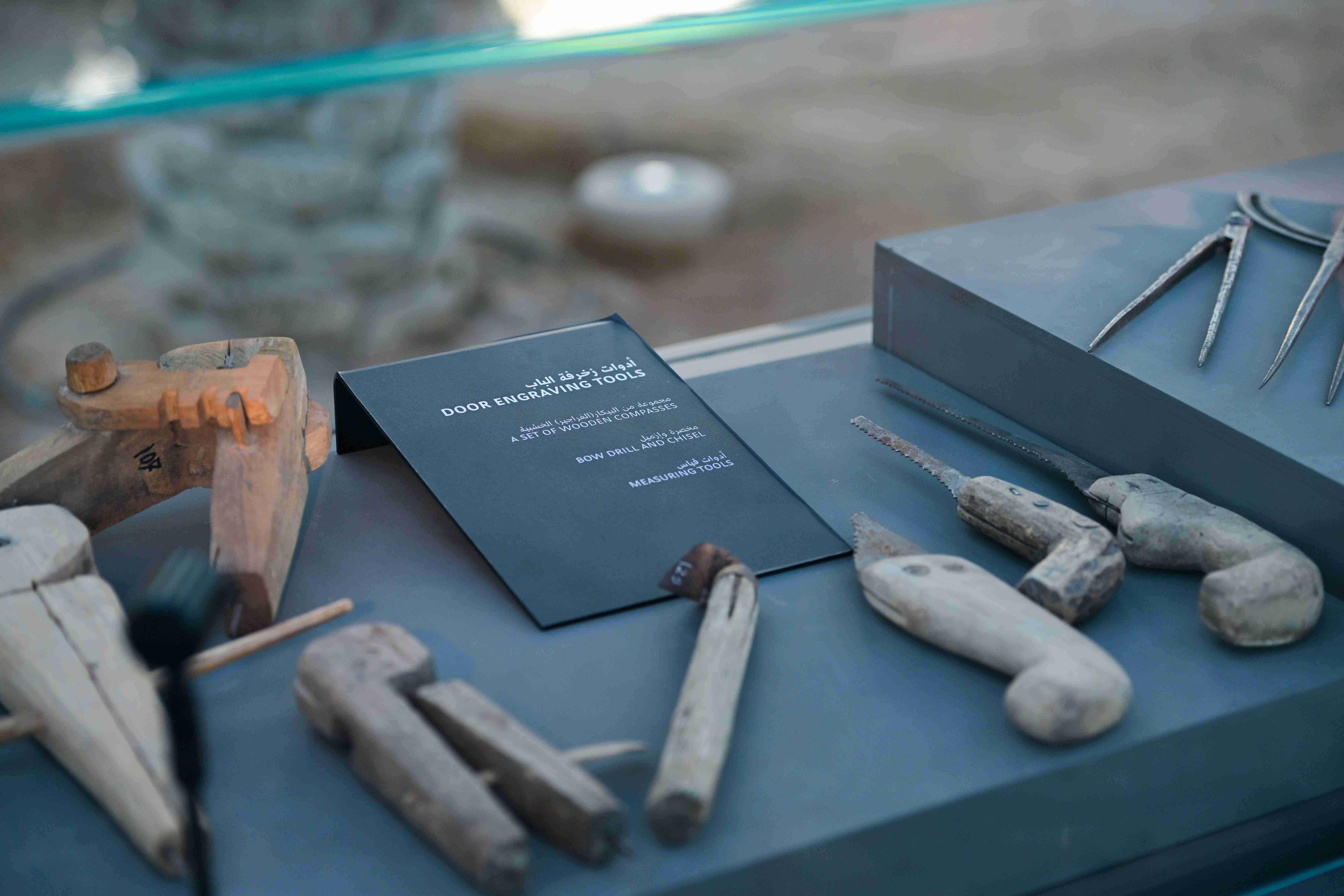
From the Exhibition "Beyond the Door". Courtesy of Diriyah Gate Development Authority.
References: Beyond the Door: A Journey to Discover the Secrets and Connotations of the Traditional Najdi Door, Dr. Eiman Abdulaziz Elgibreen, 1445 AH
